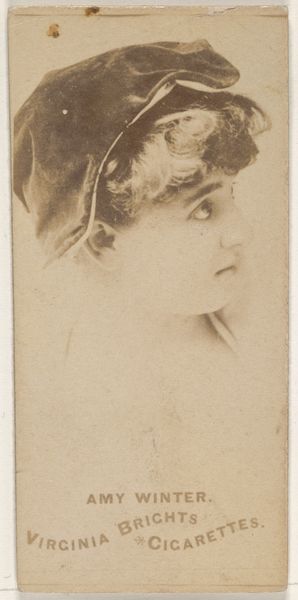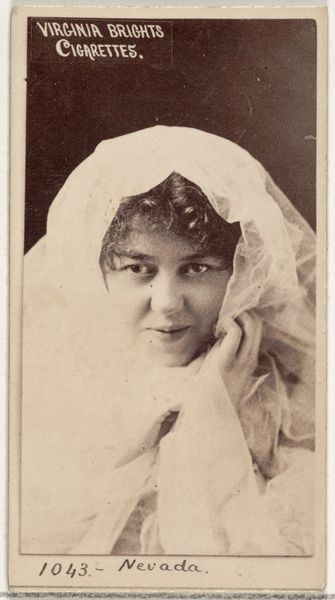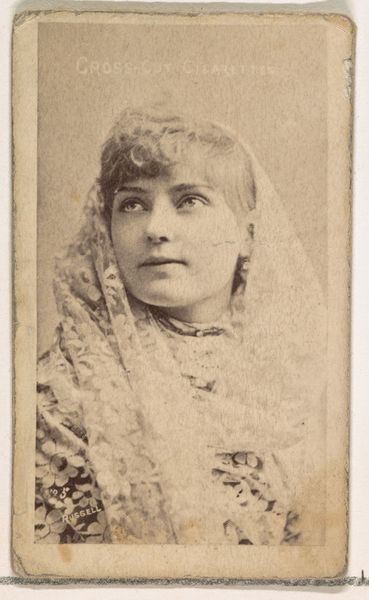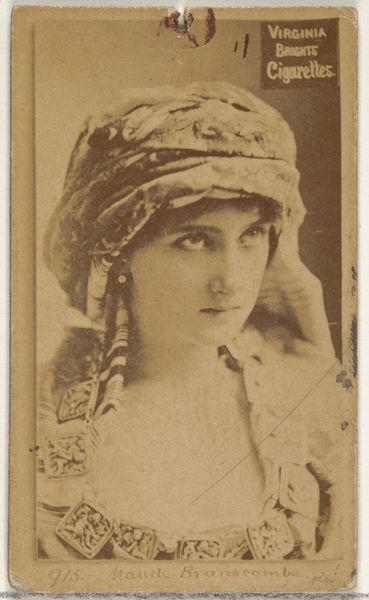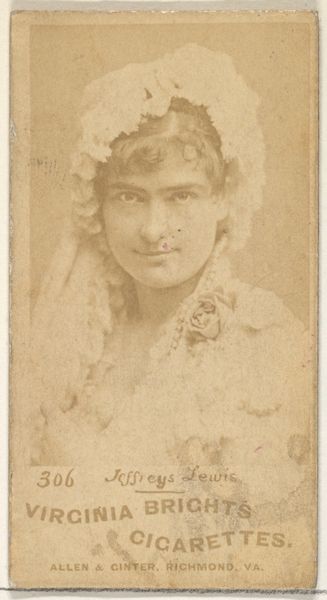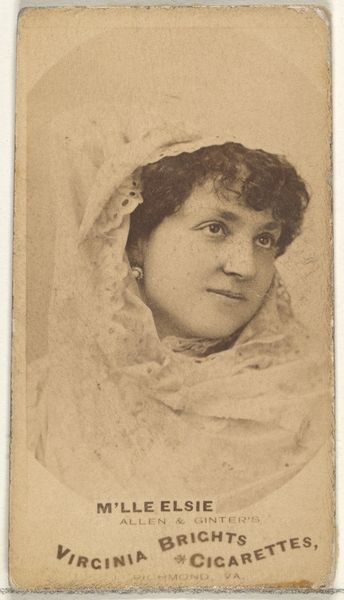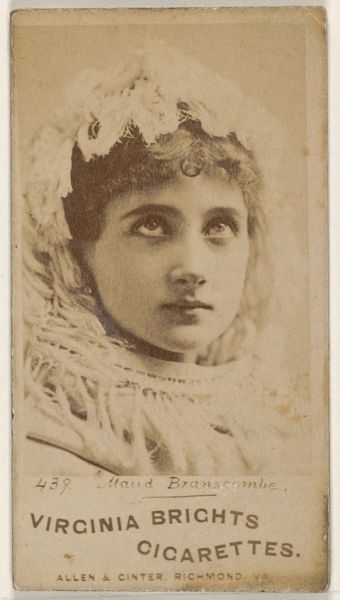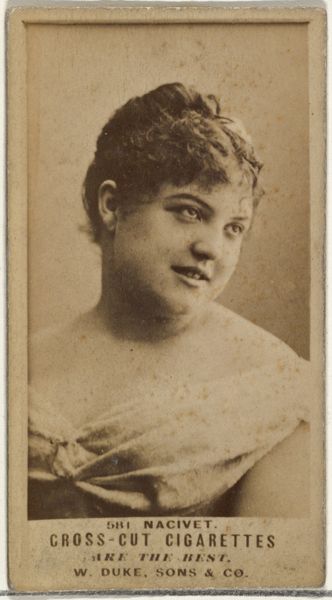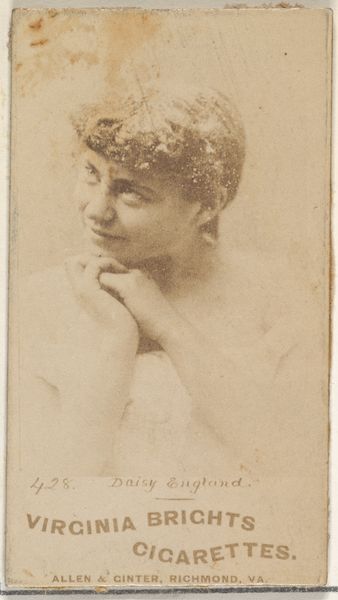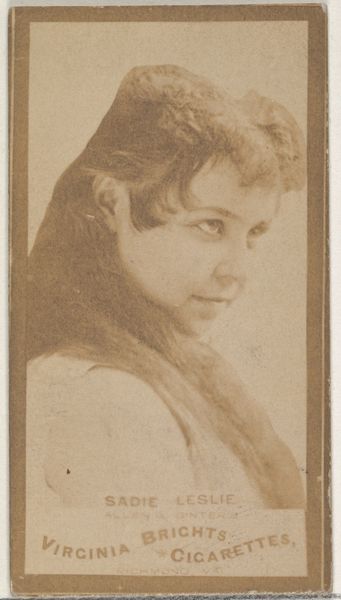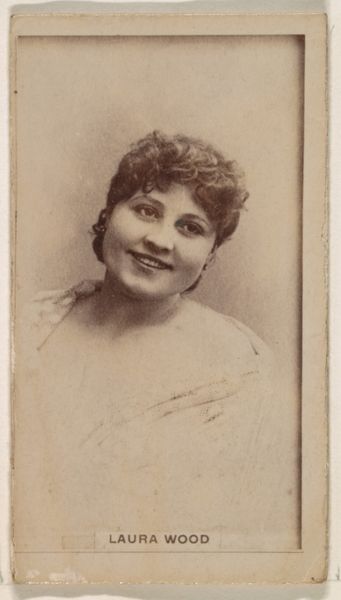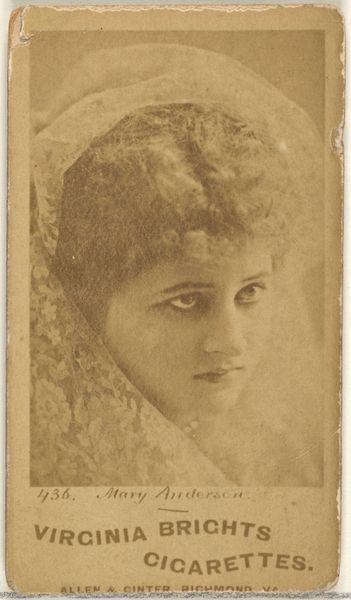
Card Number 302, Mlle. Perviani, from the Actors and Actresses series (N145-5) issued by Duke Sons & Co. to promote Cameo Cigarettes 1880s
0:00
0:00
drawing, print, photography
#
portrait
#
drawing
# print
#
photography
#
old-timey
#
coloured pencil
#
19th century
#
men
#
genre-painting
Dimensions: Sheet: 2 11/16 × 1 3/8 in. (6.8 × 3.5 cm)
Copyright: Public Domain
Curator: What strikes you first about this photograph, Editor? It’s “Card Number 302, Mlle. Perviani” from the “Actors and Actresses” series, created in the 1880s by W. Duke, Sons & Co. to advertise Cameo Cigarettes. Editor: There’s a kind of sepia-toned intimacy, despite its commercial function. The soft focus gives Mlle. Perviani an ethereal quality. It feels very… manufactured, in its idealization. Curator: Indeed. This was mass media, using photographic prints as collectibles inserted in cigarette packs. Consider how this normalized and even celebrated smoking by associating it with glamour, artistry, and feminine allure. These cards offered a readily consumable, pocket-sized fantasy. Editor: The choice to portray actresses isn't accidental, is it? They’re selling not just cigarettes but a lifestyle, associating consumption with performance and public adoration. I see how this tiny photograph participates in a much larger discourse around female performers and their commodification. Curator: Absolutely. And it's fascinating to consider how such images circulated— who collected them, how they were traded, and what desires they represented. This wasn't high art, but it was hugely influential in shaping public perceptions of beauty, celebrity, and acceptable gender roles. We must analyze this history to dismantle contemporary biases, still impacted by these media legacies. Editor: It’s almost eerie how something designed to be disposable can hold so much… weight. Even in her apparent gentleness, the fact remains: her likeness became entangled within capitalistic motivations to profit off a lethal addiction. A compelling contrast that encapsulates much of the issues artists face today. Curator: It speaks to how pervasive visual culture is and how images, even those meant for momentary enjoyment, shape our world. Editor: Yes. It prompts me to critically reassess our visual landscapes in order to dismantle the biases perpetuated in our collective imagery today.
Comments
No comments
Be the first to comment and join the conversation on the ultimate creative platform.

